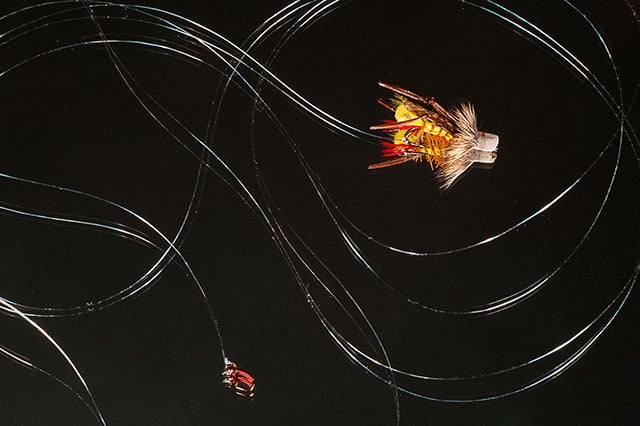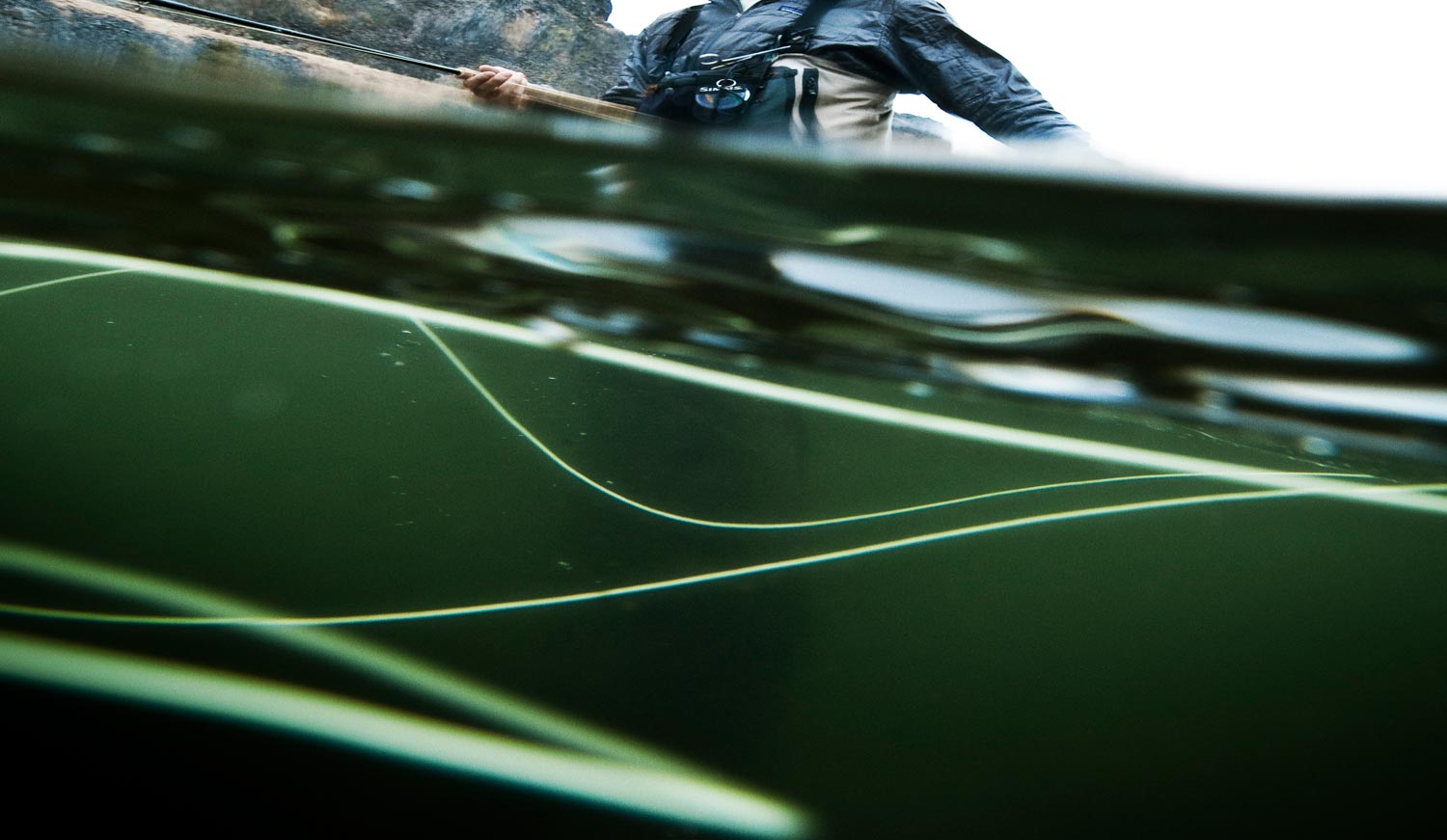Casting Unruly Rigs

Carol Ann Morris photo
Have a question you want answered? Email it to us at [email protected].
Question: I fish the Tongariro River in Taupo, New Zealand and would like to know, What is the best way to cast a large dry fly with a size 16 tungsten dropper attached by a meter and sometimes more of tippet? Is there a better way to set up the dry fly dropper?
—Stan
Answer: Your question, to me, implies that you have a casting problem, and I want to begin by saying that I’ll never expect an apology from anyone who’s struggling to cast a rig with more than one fly on it, especially if any of the flies are weighted. And tungsten?—that’s weight. So really, you’re just like the rest of us, Stan, trying to cast an invitation-for-a-tangle without it in fact becoming a tangle, trying to make the awkward less awkward.
After decades of getting tangles while trying to avoid them with such ill-behaved rigs, I’ve come up with some strategies. But it’s the dead of an especially cold winter here right now with river fishing a distant dream, and I know that memories (especially my memories, and especially at my age) soften and reshape themselves as their details slip away over time. So I set up a rig like the one you describe—what many call a “hopper-dropper” rig (heavy little nymph trailing off a big grasshopper-size dry fly)—and took it out on a lawn. A lawn is fine, though, since we’re talking not about fishing but about casting. Point is, I just went out and proved to myself that everything I’m about to tell you is valid.
There are several elements in play when you’re trying to get two (or more) ill-behaved flies out smoothly. The first element is vigilance—you just have to stay alert every moment as you cast a troublesome rig.
I learned this with the old (and still deadly), dropper nymph rig, with its soaring weighted nymphs and indicator just waiting for a chance to bounce into a hair-pulling snarl, a chance I dared not allow them. The components all seemed drawn together like magnets. I used to sit and curse and cut up and retie those rigs all the time. Gradually, though, I figured out that if I concentrated fully on my casting, never letting my attention drift, and did everything just right, I rarely got tangled. Sometimes (though not often) I’d go a whole day with but one rig and not a single problem.
It’s the same with your hopper-dropper rig with that long tippet for the dropper: you must give it your full and constant attention every moment it’s airborne.
The second element is patience. Impatience—rushing a casting stroke, not waiting for the flies to come around at the end of a stroke before starting the next one, these sorts of things—will catch up to you. And, typically, you won’t have to wait long until it does. So take your time, all the time you need. It can help to talk to yourself, repeating “I am not going to rush” or “Slow and easy” or, if you prefer the classics, “Haste makes waste.”
Let’s pause to take look at the casting stroke. Making the right stroke for a multiple-fly rig is element number three. The stroke must be smooth—a slow start building gradually to a quick rod-tip and, consequently, a quick line speed. Any inconsistencies, jerks or stalls, and the line starts bouncing and so does your rig and, well, good luck. Strive for control in your strokes, for grace.
Still looking at the cast in general, I believe that keeping the line away from the flies as they pass on opposite sides of the casting loop is a boon with a rig of two or more flies. So the fourth element is casting with a relatively open loop in the line. That’s easy: just keep the rod’s tip travelling a little extra at the end of the back and the forward casts—that widens the loop in the line to separate its sides, the side that’s the line from the side that’s leader, tippet, and flies.
Make the back and forward casting strokes on different planes—element number five—and you’ve got another way to help you avoid a multiple-fly tangle. (Actually, I generally combine two-plane casting with open line loops when I cast a problem-loving rig, and of course, as I mentioned, I also try to cast smoothly and with patience.) By two-plane casting I mean that after making a forward cast with the rod vertical, or close to it, you smoothly lower the rod tip to the side a little for the back cast. You raise the rod tip again as you begin the next forward cast and so on. This makes the line follow a sort of elongated oval course—and not only does the rig stay away from the line, but instead of jerking around at the end of the stroke it swings around, following a mild curve. Smooth, smooth…
Element number six, the final element of casting an unruly rig without problems, covers the surprise events, the kind that can come when you tug the hook home but nothing’s there or when a fish just comes off on a deeply bent rod and the rig comes flying at you. That sort of pandemonium. You instinctively try to get everything under control, but there’s too much chaos for you to tame and…ta da: tangle! The best solution I’ve found when the rig suddenly goes haywire is to just drop the rod-tip and let everything fall; then draw in the line, leader, and rig. You’ll have to fuss a little to work it all back out into a cast, but the time you’ll lose is only a fraction of the time it takes to chop apart a whole nasty tippet-riot and build a new one.
As far as the second part of your question goes, Stan, about whether there’s a better rig than the hopper-dropper for what you’re trying to do, I’ll just say this: the hopper-dropper rig, with the big dry tied to the tippet and the heavy little nymph on its own tippet knotted to the bend of the big dry’s hook, is by now well established and widely trusted. There are other similar rigs, but I haven’t found them any easier to manage than the hopper dropper, so I can’t see any reason you shouldn’t stick with it. Simply put: I don’t think a different rig is the solution to your two-fly casting challenges; I do think my six elements of taming troublesome rigs are.











